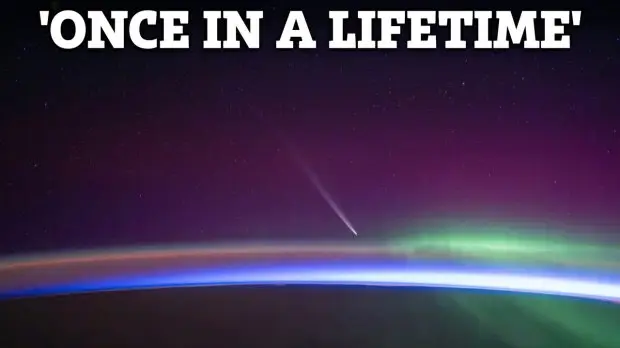BRITS have one last chance to see the "comet of the century" tonight before it disappears for 80,000 years.
Magnificent Comet A3 has been visible from the skies over the last few nights – and Tuesday is your last best shot to spot it with your own eyes.
However, it will largely depend on weather conditions with cloud and rain expected to ruin the view for some parts of the UK.
The best time to see the comet is at sunset, which is between 6pm and 6.30pm.
From today onward, the brightness will steadily start to decrease.
Comet C/2023 A3, also known as Tsuchinshan-ATLAS, was previously visible from Earth between 27 September and 2 October.
However, it disappeared from view when it became too close to the Sun to be seen from either the northern or southern hemisphere.
Between October 12 and 13, the comet will reach its closest proximity to Earth – at a safe distance of roughly 44million miles.
The space rock comes from the Oort Cloud, a giant shell around our solar system that hosts millions of comets and other icy pieces of debris.
It is characterised by the long, two-pronged tail of dust and ice that follows it, which experts say will be illuminated white and blue by the sun.
It's this tail that also makes it more visible to stargazers on Earth during its peak brightness.
Astronauts Matthew Dominick and Dom Pettit, who are both avid astro-photographers, spotted the space rock before it was visible to the naked eye by using orbital geometry and math.
The pair, who are currently boarded on the International Space Station, caught the once in a lifetime comet on camera – as shown in the video above.
How to see Comet A3
Sky gazers need to look west to see Comet A3.
It'll appear close to the horizon, so your best chance is away from buildings and with a wide view.
While the comet should be visible to the naked eye, it never hurts to be prepared for a dimmer display.
Having a good pair of stargazing binoculars or a small telescope to hand will enhance the view.
"Low on the horizon at sunset, it is best to wait a while for the sky to darken a bit before trying to see it," advised Dr Greg Brown, astronomer at Royal Observatory Greenwich.
“Look to the west, just to the left of where the sunset was and, if you are lucky, it should be just about visible to the unaided eye.
“However, as it is rapidly fading as the days go on, a pair of binoculars or a small telescope will certainly help if you are struggling to find it.
“It is visible across the country, though a low western horizon is a must, and it certainly wouldn’t hurt to be out in the countryside where light pollution is less of a problem.”
What’s the difference between an asteroid, meteor and comet?
Here’s what you need to know, according to Nasa…

